Welcome to Zevachim, and to Seder Kodshim! Awareness of the Temple permeates much of Rabbinic literature. Whether the Rabbis are trying to reconstruct what happened and where (see here), ensure future memories (see here) or build a new way to celebrate in its absence (see here), the Temple is always front and center. But Seder Kodshim really takes us behind the scenes, into the world of sacrifices, kohanim and Temple ritual. Let’s take a look at how people throughout history tried to visualize the Temple.
The first references to a sanctuary are in the Tanakh. Shmot gives a detailed description of the Tabernacle, its dimensions and materials. When King Solomon builds the First Temple hundreds of years later we also get a very detailed reconstruction in the book of Kings I, starting in chapter six:
“In the four hundred and eightieth year after the Israelites left the land of Egypt, in the month of Ziv—that is, the second month—in the fourth year of his reign over Israel, Solomon began to build the House of God. The House that King Solomon built for God was 60 cubits long, 20 cubits wide, and 30 cubits high” (Kings I 6:1-2)
The last Biblical place where we have a lengthy description of the Temple is in the prophecies of Ezekiel. However, here there is a twist: Ezekiel is not physically seeing the Temple, which has already been destroyed, but rather he is transported in a prophetic vision:
“It brought me, in divine visions, to the Land of Israel, and set me down on a very high mountain on which there seemed to be the outline of a city on the south.” (Ezekiel 40:2)
Since many details of this vision do not fit with Solomon’s Temple, commentaries say that he is describing the Third Temple that will be built in the future.
In Rabbinic literature, we have numerous descriptions of the Temple, its courtyards and its buildings. These are usually describing the Second Temple at its height, after Herod rebuilt it. The most extensive details are found in Masechet Middot, the tractate of measurements, which tells us about walls, gates and chambers of the holy place. Finally, we have Josephus, an eyewitness to the last days of the Second Temple. He too gives a few descriptions of the site, one in The Jewish War Book Five (chapter five).
Words words words – as we know, a picture is worth a thousand of them. Eventually, scholars and commentaries were not satisfied with verbal descriptions and began to draw diagrams. Probably the best known of these diagrams is that of the Tiferet Yisrael commentary to the Mishnah. Rabbi Yisrael Lifshitz, who lived and taught in Poland in the first half of the nineteenth century, prefaced his commentary to Masechet Middot with an annotated layout of the Temple courtyards and rooms. It is well known today because the Kehati edition of the Mishnah put it in their commentary to Middot and many have used it since.
Other depictions of the Temple were more for artistic purposes, and clearly did not lean too heavily on text. Some artists depicted the Temple as similar to the Dome of the Rock, which was built on its ruins, as in this printer’s mark from 16th century Italy:
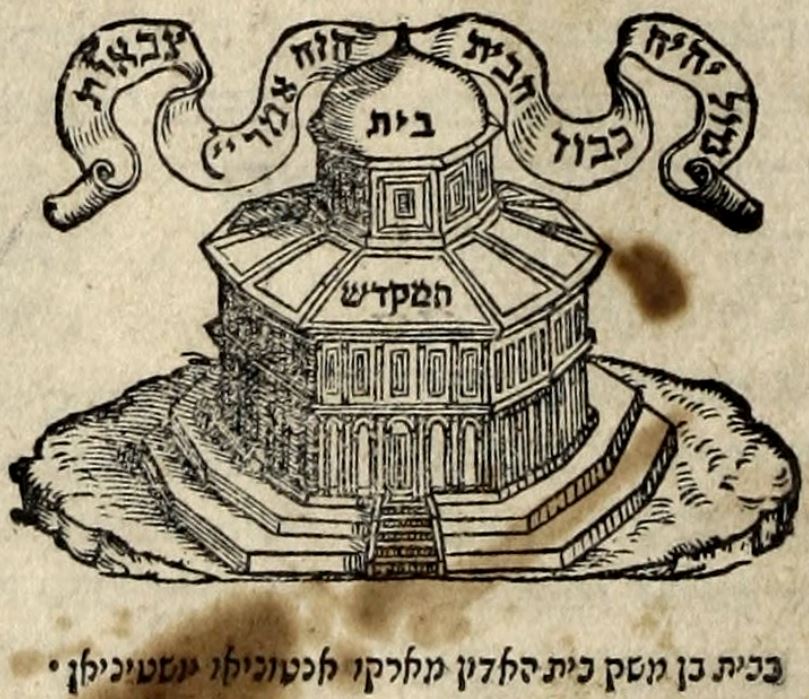
Marcantonio Giustinian (1516-1571), Public domain, via Wikimedia Commons
Others chose to depict the Temple as similar to buildings (or cathedrals, as in the case of Christian artists) of their own time, like Jean Fouquet’s illustration for an edition of Josephus’ Antiquities of the Jews:

Fouquet illustration 15th c France
Jean Fouquet, Public domain, via Wikimedia Commons
Perhaps the most ambitious visualizations of the Temple were not the drawings but the models. To make something in three dimensions involves real immersion in the details, knowing the proportions and the levels of each part of the Temple. One early attempt at a model was in 17th century Holland. A Jew named Jacob Judah Leon, nicknamed “Templo” for his interest in all things Mikdash related, wrote a comprehensive book, still used today, called תבנית ההיכל, the shape of the sanctuary. He built a model based on his knowledge and showed it in various places, including in London, where Queen Henrietta came to see it.
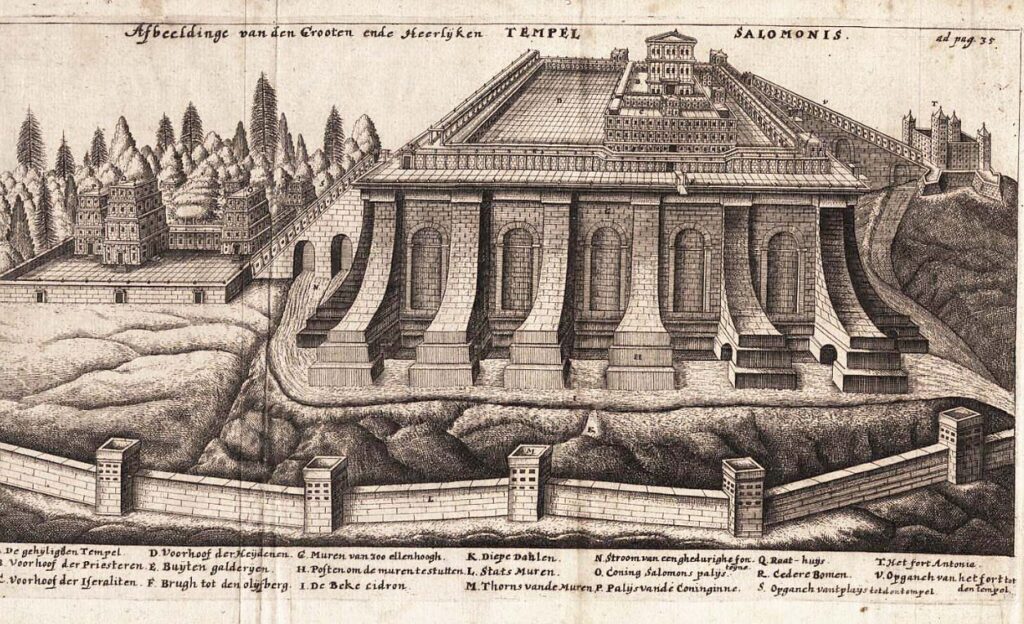
Drawing from Templo’s book
http://www.mhs.ox.ac.uk/gatt/catalog.php?num=57, Public domain, via Wikimedia Commons
By the nineteenth century, there was more knowledge of the actual topography of Jerusalem and the Temple Mount. Conrad Schick, an architect, archeologist, urban planner and model builder, was allowed by the Ottomans to not only visit the Temple Mount but to see the subterranean chambers and tunnels below the Dome of the Rock. With this knowledge he constructed his own models, both of the Temple Mount in his times, and of what he thought Solomon’s Temple looked like.
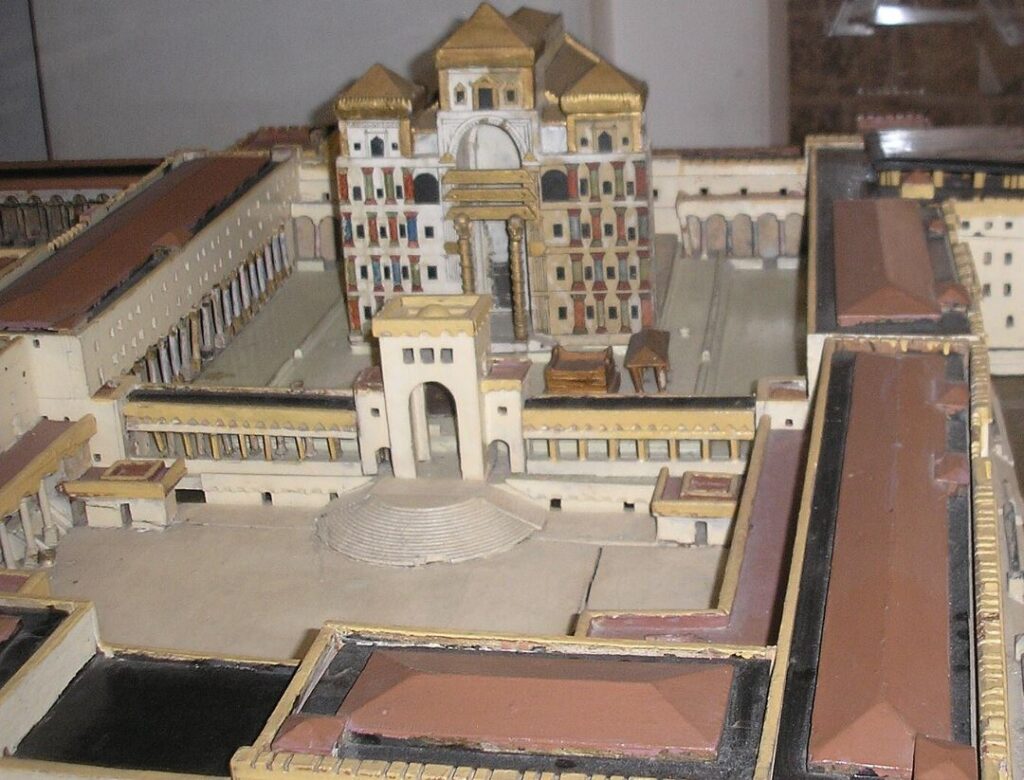
Deror avi, CC BY-SA 3.0 <https://creativecommons.org/licenses/by-sa/3.0>, via Wikimedia Commons
In modern times, we have both more information and proximity to the Temple Mount and in some circles, a great desire to not only imagine the Temple but to prepare to rebuild it. This was the idea behind the creation of the Temple Institute (Machon haMikdash) after the Six-Day War. The founder, Rabbi Yisrael Ariel, was one of the paratroopers who liberated the Temple Mount in 1967. He created the Institute to foster understanding of the Temple as well as to prepare the actual vessels that will be used. A large model of the Second Temple has pride of place in the Institute. Another model of the Temple is strategically located on the roof of the Aish HaTorah building, overlooking the Temple Mount and the site of the Temple:
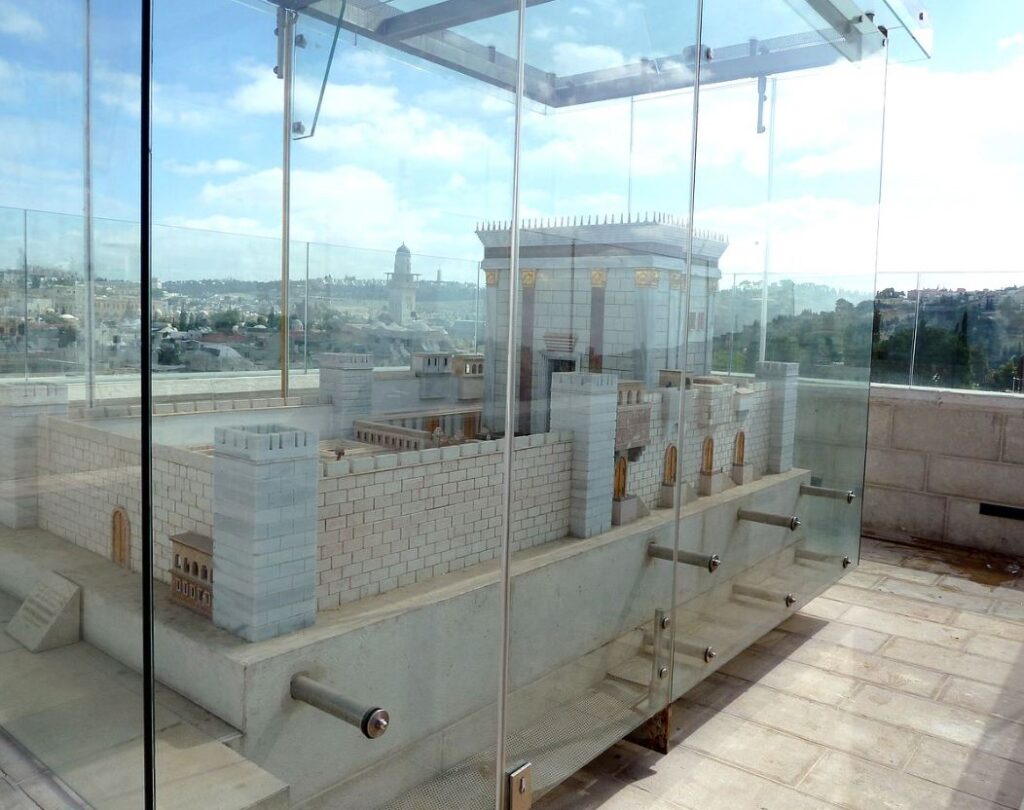
Utilisateur:Djampa, CC BY-SA 4.0 <https://creativecommons.org/licenses/by-sa/4.0>, via Wikimedia Commons
In the 1990s, as part of the enormous excavation of the Western Wall Tunnels, Rabbi Zalman Koren was asked to make a model to use in the Tunnel tours. This model focused on the archaeology as well as the development of the area of the Western Wall, and what we learned about it from the excavations. While the Temple was clearly depicted, there was nothing new in that part because we have no archaeology of the Temple itself. Rabbi Koren’s model, as any physical model, shows the difficulties in making something three-dimensional, as opposed to a drawing. Steps, levels, tunnels – they all come to life and showcase the contradictions in the various sources.
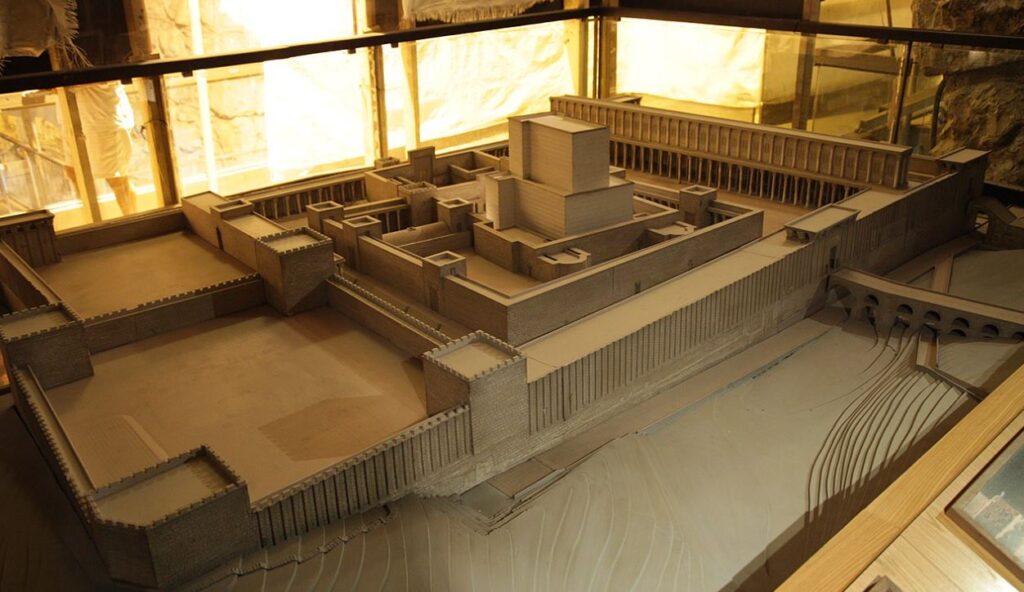
Xavier Gillet, Bordeaux, FranceCC BY-SA 2.0 <https://creativecommons.org/licenses/by-sa/2.0>, via Wikimedia Commons
Today in Israel more Jews than ever are ascending the Temple Mount, praying there, and learning about the structure. Not everyone would go so far as to build a model on his car though, as this man did in Eilat:
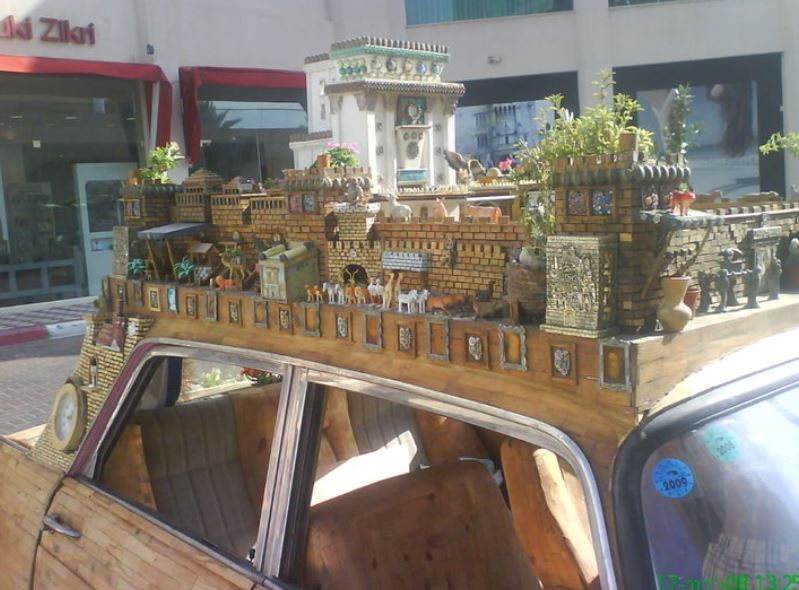
Nizzan Cohen, CC BY 4.0 <https://creativecommons.org/licenses/by/4.0>, via Wikimedia Commons
May our learning be in the merit of a rebuilt Bet HaMikdash and peace throughout the world.










